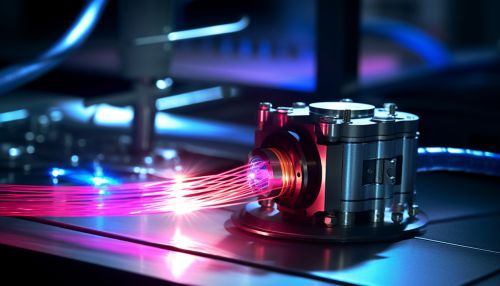The Physics of Quantum Optics in Fiber Optic Communication
Introduction
Quantum optics is a field of physics that explores the nature of light and its interactions with matter at the quantum level. It is a branch of quantum physics that has found significant applications in the field of fiber optic communication. This article delves into the physics of quantum optics in fiber optic communication, exploring the principles, mechanisms, and applications of this fascinating field.


Quantum Optics: An Overview
Quantum optics studies the behavior of light and its interaction with matter, considering both the particle-like properties of photons and the wave-like properties of light. It combines the principles of quantum mechanics and the theory of light, leading to the development of quantum theories of light-matter interactions. Quantum optics has led to the discovery and understanding of phenomena such as quantum entanglement, quantum superposition, and quantum coherence, all of which have significant implications in fiber optic communication.
Fiber Optic Communication: An Overview
Fiber optic communication is a method of transmitting information from one place to another by sending pulses of light through an optical fiber. The light forms an electromagnetic carrier wave that is modulated to carry information. Fiber optic communication has revolutionized the telecommunications industry due to its advantages over traditional copper wire systems, such as higher bandwidth, longer transmission distance, and resistance to electromagnetic interference.


Quantum Optics in Fiber Optic Communication
The application of quantum optics in fiber optic communication involves the use of quantum states of light to encode, transmit, and decode information. This approach offers several advantages over classical communication methods, including increased security and potentially higher data transmission rates.
Quantum Key Distribution
One of the most significant applications of quantum optics in fiber optic communication is quantum key distribution (QKD). QKD uses quantum mechanics to secure communication by providing a way to detect eavesdroppers. It enables two parties to produce a shared random secret key known only to them, which can be used to encrypt and decrypt messages.


Quantum Repeaters
In fiber optic communication, signal loss is a significant issue that limits the transmission distance. Quantum repeaters are devices that can extend the range of quantum communication by reducing signal loss. They use the principles of quantum optics to store and retransmit the quantum states of photons, thereby preserving the integrity of the transmitted information.


Quantum Amplifiers
Quantum amplifiers, like quantum repeaters, are used to overcome signal loss in fiber optic communication. However, unlike quantum repeaters, quantum amplifiers increase the amplitude of the quantum signal without changing its quantum state. This is achieved by using a process called parametric down-conversion, which involves splitting a photon into two lower-energy photons.


Future Perspectives
The integration of quantum optics in fiber optic communication holds great promise for the future of telecommunications. With ongoing research and technological advancements, we can expect to see more secure, efficient, and long-range communication systems. Furthermore, the principles of quantum optics could pave the way for the development of quantum computers and quantum networks, heralding a new era in information technology.


